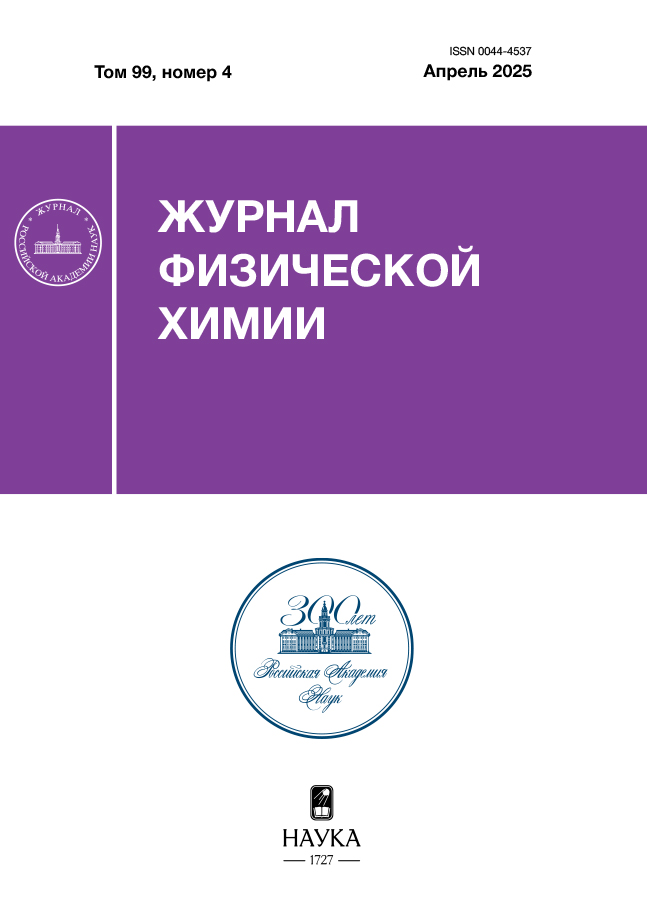Low-temperature synthesis of highly ordered lithium-cobalt double phosphates with improved electrochemical characteristics in lithium nitrate melt
- Authors: Zharov N.V.1, Maslova М.V.1, Semushin V.V.1
-
Affiliations:
- Federal Research Center “Kola Scientific Center of the Russian Academy of Sciences”
- Issue: Vol 99, No 4 (2025)
- Pages: 665-674
- Section: ELECTROCHEMISTRY. GENERATION AND STORAGE OF ENERGY FROM RENEWABLE SOURCES
- Submitted: 14.06.2025
- Accepted: 14.06.2025
- Published: 15.06.2025
- URL: https://jdigitaldiagnostics.com/0044-4537/article/view/684411
- DOI: https://doi.org/10.31857/S0044453725040158
- EDN: https://elibrary.ru/FPRKTL
- ID: 684411
Cite item
Abstract
A low-temperature technique for preparation of highly dispersed powders of lithium-cobalt double phosphates with a highly ordered crystal lattice and a given morphology is proposed. The electrochemical performance and cyclic life of the obtained compounds are shown to exceed the respective characteristics of the known analogs. The proposed method can be extended to obtain a wide range of electrode materials for lithium-ion batteries with olivine structure.
Keywords
Full Text
About the authors
N. V. Zharov
Federal Research Center “Kola Scientific Center of the Russian Academy of Sciences”
Author for correspondence.
Email: n.zharov@ksc.ru
I. V. Tananaev Institute of Chemistry and Technology of Rare Elements and Mineral Raw Materials
Russian Federation, ApatityМ. V. Maslova
Federal Research Center “Kola Scientific Center of the Russian Academy of Sciences”
Email: n.zharov@ksc.ru
I. V. Tananaev Institute of Chemistry and Technology of Rare Elements and Mineral Raw Materials
Russian Federation, ApatityV. V. Semushin
Federal Research Center “Kola Scientific Center of the Russian Academy of Sciences”
Email: n.zharov@ksc.ru
I. V. Tananaev Institute of Chemistry and Technology of Rare Elements and Mineral Raw Materials
Russian Federation, ApatityReferences
- Xinxin Z., Guangchuan L., Dan L. // RSC Adv. 2017. V. 7. P. 37588. https://doi.org/10.1039/C7RA04714B.
- Zülke A., Li Y., Keil P., et al. // Batteries & Supercaps. 2021. V. 4. № 6. P. 934. https://doi.org/10.1002/batt.202100046.
- Song, S., Peng, X., Huang, K., et al. // Nanoscale Res. Lett. 2020. V. 15. P. 110. https://doi.org/10.1186/s11671-020-03335-8.
- Yang X., Lin M., Zhen G., et al. // Adv. Funct. Mater. 2020. V. 30. P. 2004664. https://doi.org/10.1002/adfm.202004664.
- Lyu Y., Wu X., Wang K., et al. // Adv. Energy Mater. 2021. V. 11. P. 2000982. https://doi.org/10.1002/aenm.202000982.
- Tolganbek N., Yerkinbekova Y., Kalybekkyzy S., et al. // J. Alloys Compd. 2021. V. 882. P. 160. https://doi.org/10.1016/j.jallcom.2021.160774.
- Jiangtao H., Weiyuan H., Luyi Y., et al. // Nanoscale. 2020. V. 12. № 28. P. 15036. http://dx.doi.org/10.1039/D0NR03776A.
- Wani T.A., Suresh G. // J. Energy Storage. 2021. V. 44. P. 103. http://dx.doi.org/10.1016/j.est.2021.103307.
- Zhang M., Garcia-Araez N., Hector A. // J. Mater. Chem. A. 2018. V. 6. № 30. P. 14483. http://dx.doi.org/10.1039/C8TA04063J.
- Markevich E., Sharabi R., Gottlieb H., et al. // Electrochem. Commun. 2012. V. 15. № 1. P. 22. https://doi.org/10.1016/j.elecom.2011.11.014.
- Wu X., Meledina M., Tempel H., et al. // J. Power Sources. 2020. V. 450. P. 227. https://doi.org/10.1016/j.jpowsour.2020.227726.
- Wu X., Meledina M., Barthel J., et al. // Energy Storage Mater. 2019. V. 22. P. 138. https://doi.org/10.1016/j.ensm.2019.07.004.
- Hou Y., Chang K., Li B., et al. // Nano Res. 2018. V. 11. P. 2424. https://doi.org/10.1007/s12274-017-1864-0.
- Zhaojin L., Zhenzhen P., Hui Z., et al. // Nano Lett. 2016. V. 16. № 1. P. 795. https://doi.org/10.1021/acs.nanolett.5b04855.
- Murukanahally Kempaiah D., Quang T., Takaaki T., et al. // RSC Adv. 2014. V. 4. https://doi.org/10.1039/C4RA10689J.
- Zharov N.V., Maslova M.V., Ivanenko V.I., et al. // Russ. J. Phys. Chem. 2023. V. 97. P. 2529. https://doi.org/10.1134/S0036024423110365.
- Wu B., Xu H., Mu D., et al. // J. Power Sources. 2016. V. 304. P. 181. https://doi.org/10.1016/j.jpowsour.2015.11.023.
- Truong Q., Devaraju M.K., Ganbe Y., et al. // Sci Rep. 2014. V. 4. P. 3975. https://doi.org/10.1038/srep03975.
- Truong Q., Devaraju M.K., Honma I. // J. Mater. Chem. 2014. V. 2. P. 3975 https://doi.org/10.1039/C4TA03566F.
- Manzi, J.; Curcio, M.; Brutti, S. // Nanomater. 2015. V. 5. P. 2212. https://doi.org/10.3390/nano5042212.
- Maeyoshi Y., Miyamoto S., Noda Y., et al. // J. Power Sources. 2017. V. 337. P. 92. https://doi.org/10.1016/j.jpowsour.2016.10.106.
- Ludwig J., Marino C., Haering D., et al. // RSC Adv. 2016. V. 6. № . 86. P. 82984. https://dx.doi.org/10.1039/C6RA19767A.
- Örnek A. // J. Chem. Eng. 2018. V. 331. P. 501. https://doi.org/10.1016/j.cej.2017.09.007.
- Truong Q.D., Devaraju M.K., Tomai T., et al. // ACS Appl. Mater. Interfaces. 2013. V. 5. P. 26. https://doi.org/10.1021/am403018n.
Supplementary files
















